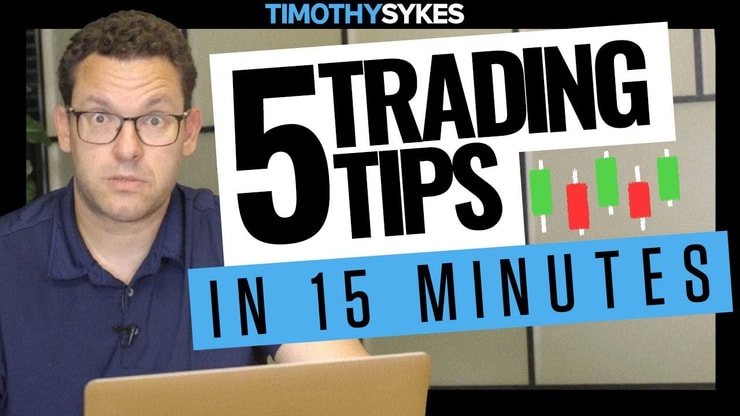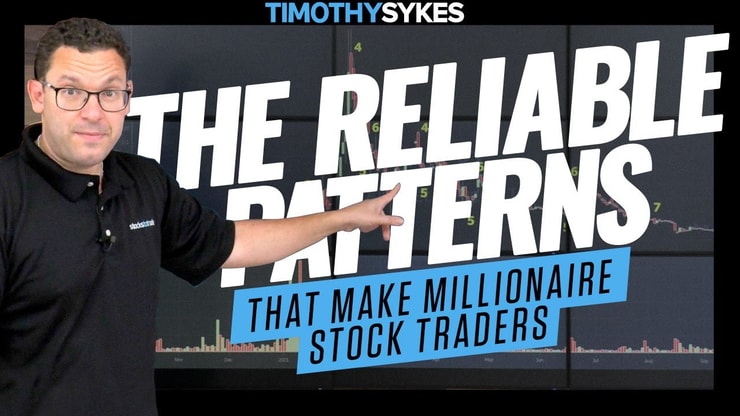In the world of day trading, timing is everything. Identifying the best times for day trading can make a difference in the rates of transactions and money changing hands, investment activity on brokers and platforms, and ultimately your investing returns. Whether you’re new to the trading scene or a seasoned player, the bottom line in day trading is knowing when to act and when to watch.
Readers should dive into this article because it makes a case for the optimal times for day trading, crucial for maximizing profits and minimizing risks.
I’ll answer the following questions:
- What is day trading?
- How does day trading work?
- What is the best time for day trading?
- What are the best day trading strategies?
- How does trading on a 15-minute chart differ from a 5-minute chart?
- What is the significance of trading during the market’s opening and closing hours?
- How can backtesting improve day trading strategies?
- Why is understanding market hours important for day traders?
Let’s get to the content!
Table of Contents
What Is Day Trading?
Day trading involves buying and selling stocks, ETFs, or other financial instruments within the same trading day. Day traders capitalize on small price movements, often leveraging large amounts of capital to do so. Unlike investors who might hold positions for years, day traders close out all trades by the end of the day, avoiding the risk of price gaps overnight.
How Does Day Trading Work?
In day trading, traders look for opportunities where a stock or ETF shows potential for significant price movement in a short period. They use various strategies and analysis methods, including technical indicators, chart patterns, and market news. The goal is to enter and exit trades quickly, securing profits from the price fluctuations that occur throughout the trading day.
What Is a Day Trading Time Frame?
Day trading time frames refer to the duration over which a trader observes price movements and makes trading decisions. These range from very short-term (like 1-minute or 5-minute charts) to longer periods (like hourly or daily charts). Each time frame offers different insights into market behavior and requires different trading strategies to capitalize on the price action effectively.
What Is the Best Time for Day Trading?
When it comes to day trading, timing is more than just a factor — it’s the bedrock of success. Many new traders enter the market without understanding the significance of the trading day’s ebb and flow. The reality is, not all hours are created equal. During the first hour after the markets open, particularly the New York Stock Exchange and NASDAQ, volatility and volumes spike. This period, typically from 9:30 to 10:30 AM EST, offers numerous opportunities for profit, but it’s also laden with potential losses. It’s crucial to approach these early hours with a solid strategy and an understanding of market psychology.
Conversely, the market often slows down around midday, making it less ideal for certain types of trades. However, the last hour of trading, from 3:00 to 4:00 PM EST, can see another increase in activity. This is when big players, like institutions and funds, adjust their positions, potentially leading to significant price movements. It’s important to note that while these hours can be optimal for day trading, they also require quick decision-making and an acute understanding of market dynamics.
Understanding the best times for day trading is crucial, but knowing the specific top times to trade can significantly enhance your strategy. Different market hours offer varying levels of volatility and opportunity. For day traders, capitalizing on these windows is key to maximizing efficiency and profitability. It’s not just about the opening and closing bells; it’s about pinpointing those sweet spots in the trading day when the conditions align with your strategy. To dive deeper into this topic and optimize your trading times, check out my insights on the top times to trade for maximum efficiency.
Trading When the Market Opens
The first hour after the market opens is often the most volatile, offering significant opportunities for profit. Price movements are largely driven by overnight news and events. Traders must be quick and decisive, as the high volatility can lead to rapid price changes.
More Breaking News
- Futu’s Unexpected Climb: What’s Behind It?
- Moderna Stock Surges: Breakthrough Influenza Vaccine Results?
- LSB’s Remarkable Stock Surge: Should You Buy?
Trading During the Last Hour
The last hour before the market closes can also present profitable opportunities. Day traders might capitalize on trends that develop throughout the day or make trades based on anticipations for the next trading day. This period requires a good understanding of market sentiment and the day’s trading patterns.
Middle of the Day
The middle of the day tends to be less volatile and can be challenging for day trading. However, it can be a good time for detailed analysis or to prepare for the closing hours when volatility often picks up again.
Trading on a 15-Minute Chart
A 15-minute chart offers a balance between the detail of short-term fluctuations and the broader view of the market trend. It’s suitable for traders who look for patterns and trends that last several hours.
Trading on a 5-Minute Chart
The 5-minute chart is popular among day traders for its ability to show short-term price movements and trends. This time frame requires quick decision-making and often suits more experienced traders.
1-Minute Time Frame Trading
The 1-minute chart is the most short-term and volatile. It’s used for quick scalp trades and requires a high level of discipline and a solid trading strategy to be profitable.
Trading on Multiple Time Frames
Using multiple time frames in analysis can provide a more comprehensive view of the market. For example, while a 1-minute chart shows immediate price action, an hourly chart can offer insight into the broader trend. This approach helps in making more informed and balanced trading decisions. It allows traders to align their strategies with both short-term fluctuations and longer-term trends, offering a more nuanced and effective way to navigate the markets.
For a deeper understanding of how to leverage this technique, explore my guide on technical analysis using multiple time frames.
Best Days and Months to Trade the Stock Market
Statistically, the stock market tends to perform better at certain times of the year. Months like December and January often see increased market activity. Additionally, trading on days like Monday or Friday can present different opportunities and risks compared to mid-week trading, due to patterns like the Monday effect or weekend news developments.
How To Start Day Trading
Starting in day trading requires a blend of education, strategy, and practical experience. Beginners should focus on learning market fundamentals, technical analysis, and the psychological aspects of trading. Practicing with a demo account or small positions can help new traders gain experience without significant risks.
Best Day Trading Strategies
In day trading, your strategy is your roadmap. One effective approach is ‘trend following’ where you trade in the direction of the market trend. This requires keen observation of price movements and an understanding of when to enter and exit trades. Another strategy is ‘scalping’, which involves making numerous small trades to capitalize on minor price changes. Scalping demands a high level of attention and swift execution, making it suitable for traders who can dedicate that kind of focus.
Swing trading is another strategy, although it tends to stretch beyond a single trading day. It involves holding onto shares for several days to capitalize on expected upward or downward market shifts. This strategy demands a deep understanding of market trends and psychology. Regardless of the strategy, successful day trading always rests on thorough research, continuous learning, and an unwavering discipline. Over years of trading and teaching, I’ve observed that the best traders are those who adapt their strategies to the market, rather than trying to force the market to adapt to their strategies.
Starting with the right strategies can make a significant difference in a trader’s journey. Beginners need strategies that are not only effective but also align with their learning curve and risk tolerance. It’s about laying a solid foundation and gradually building upon it as skills and experience grow. For those just stepping into the world of day trading, I’ve compiled a list of trading strategies specifically tailored for beginners, designed to help you start on the right foot.
Momentum Trading Strategy
Momentum trading involves identifying stocks that are moving significantly in one direction on high volume. The key is to join the move early and ride the wave of momentum to capture profits.
Scalping Strategy
Scalping is about making numerous small profits on minor price changes throughout the day. This strategy requires quick decision-making and excellent market analysis skills.
Breakout Trading Strategy
This strategy involves trading a stock as it breaks out from a previous trading range. The breakout is typically on high volume, indicating strong market interest.
Pullback Trading Strategy
Pullbacks in a trend are seen as buying or selling opportunities, depending on the overall trend. This strategy requires understanding of trend analysis and pattern recognition.
News Trading Strategy
News traders take advantage of the volatility caused by significant news events. They must quickly interpret company news and make rapid trading decisions.
Range Trading Strategy
Range traders capitalize on stocks that are moving within a specific price range. They buy at the bottom of the range and sell at the top.
High-Frequency Trading (HFT) Strategy
High-frequency trading involves sophisticated algorithms to execute a large number of orders at extremely high speeds. This strategy is typically used by professional traders and requires substantial technology and capital.
Backtesting in Choosing the Best Time for Day Trading
Backtesting involves applying trading strategies to historical data to see how they would have performed. It is crucial for understanding the effectiveness of a strategy and identifying the best times for day trading. Successful backtesting requires a thorough understanding of market conditions and an ability to accurately simulate those conditions.
How To Choose the Best Time Frames for Day Trading
Selecting the right time frame for day trading is not just about clocking the market; it’s about aligning with your individual trading style and goals. If you’re someone who thrives in fast-paced environments, then trading in the high-volatility windows might suit you. This involves the first and last hours of the trading day when prices can change rapidly, offering opportunities for quick profits (and losses).
Alternatively, if you prefer a more measured approach, focusing on midday trading when the market is less volatile could be more your speed. This period often requires a different set of strategies, such as looking for small, consistent gains rather than big moves. Remember, it’s not just about the market’s rhythm; it’s also about your personal comfort levels, risk tolerance, and financial goals.
For beginners, it’s advisable to start with smaller trades and lower leverage, gradually increasing your exposure as you gain experience. In my years of trading and teaching, I’ve seen many people rush in, only to be overwhelmed by the pace and complexity of the market. Start slow, build your skills, and remember, in trading, patience often pays.
Identifying Your Trading Style
Your trading style, whether it’s scalping, momentum trading, or another method, will influence the best time frame for you. Each style has its nuances and requires different time frames to be effective.
Understanding Market Hours
Knowing the market hours is crucial. For instance, trading during the opening hours might offer the best opportunities for momentum traders, while the closing hours might be better for those looking to capitalize on the day’s overall trends.
Analyzing Liquidity and Volatility
Liquidity and volatility vary throughout the trading day. High liquidity times can offer more opportunities but also more competition, while high volatility periods can offer great profit potential but also higher risk.
Comparing Intraday Time Frames
Each intraday time frame provides a different view of the market. For example, a 1-minute chart can be ideal for a scalper, while a 15-minute chart might be better for a swing trader.
Aligning with Economic Releases
Economic releases can cause significant market movements. Aligning your trading times with these releases can be beneficial, but it requires understanding how different types of news impact the market.
Utilizing Multiple Time Frame Analysis
Using multiple time frames in your analysis can give a more comprehensive understanding of market trends and help in making more informed decisions.
Key Takeaways
- The best times for day trading are typically the first hour after the markets open and the last hour before they close, due to higher volatility and volume.
- Employing a solid trading strategy that matches your style is crucial. Whether it’s trend following, scalping, swing trading or others, your approach should be well-researched and practiced.
- Choosing the right time frame for trading depends on your personal trading style, risk tolerance, and financial goals. It’s important to find a balance that works for you.
- Start with small trades and lower leverage, especially if you’re new to day trading. Build your skills gradually to navigate the complexities of the market more effectively.
Trading isn’t rocket science. It’s a skill you build and work on like any other. Trading has changed my life, and I think this way of life should be open to more people…
I’ve built my Trading Challenge to pass on the things I had to learn for myself. It’s the kind of community that I wish I had when I was starting out.
We don’t accept everyone. If you’re up for the challenge — I want to hear from you.
Apply to the Trading Challenge here.
Trading is a battlefield. The more knowledge you have, the better prepared you’ll be.
What’s your experience in day trading? Let me know in the comments — I love hearing from my readers!
Frequently Asked Questions
What Happens If I Place a Market Order for Stocks After Hours?
If you place a market order for stocks after hours, it will be executed at the opening price of the next trading day. This can lead to unexpected results due to price changes overnight.
What Is the Rule of Three in Day Trading?
The ‘rule of three’ in day trading is a pattern that suggests a security will move in a particular direction after three consecutive sessions of moving in the opposite direction. It’s used to predict reversals.
What Is the 10am rule in stocks?
The 10am rule suggests waiting until after 10am to make any significant trades. This rule is based on the idea that the market tends to stabilize after the first half-hour of trading, allowing for more predictable trading conditions.
Should I Use Multiple Timeframes in My Trading?
Using multiple timeframes in trading can provide a more comprehensive view of the market, helping you to make more informed decisions. It allows you to see both short-term price movements and longer-term trends.
Can I Use A Credit Card To Finance My Day Trading Account?
While it’s technically possible to use a credit card to fund a day trading account with some brokers, it’s generally not advisable. Financing investments with credit cards introduces additional risks and costs, such as high-interest rates and potential debt accumulation.






Leave a reply